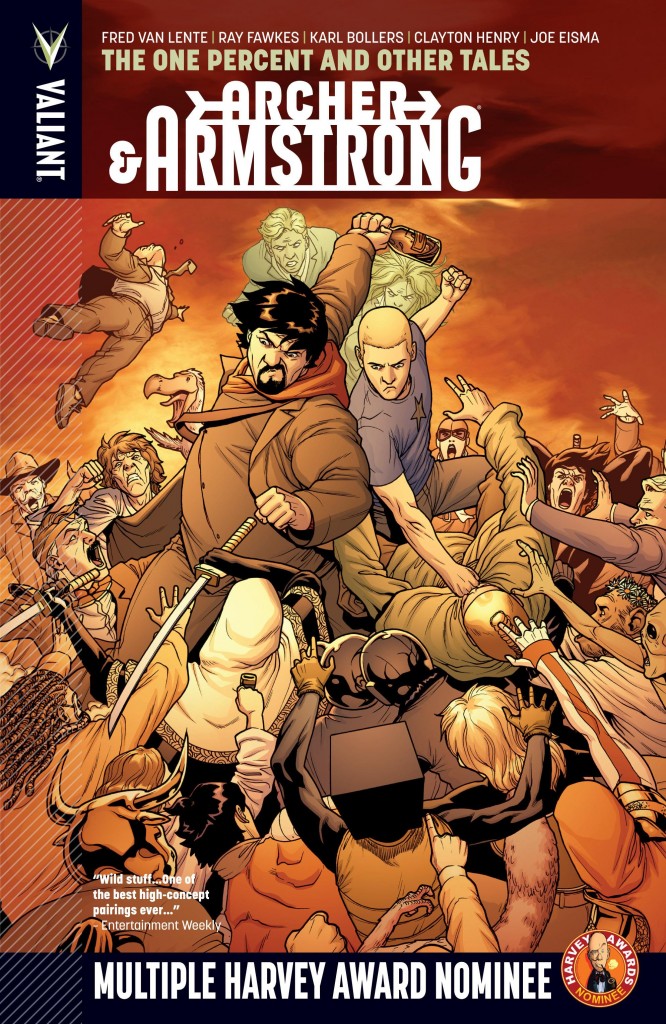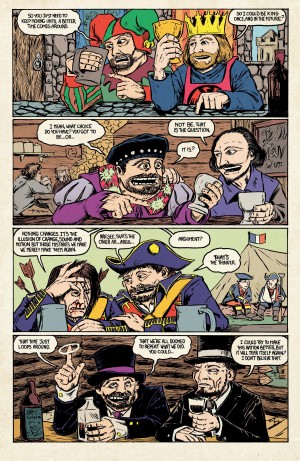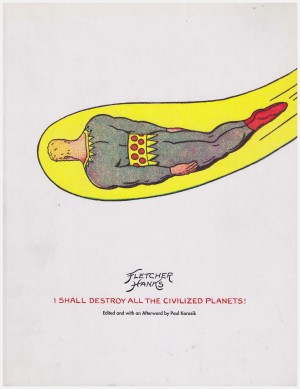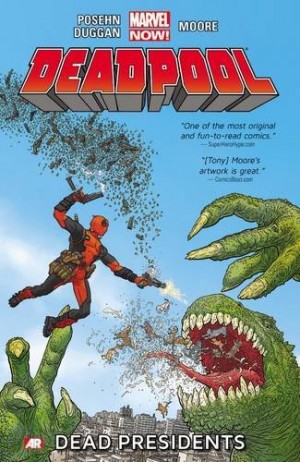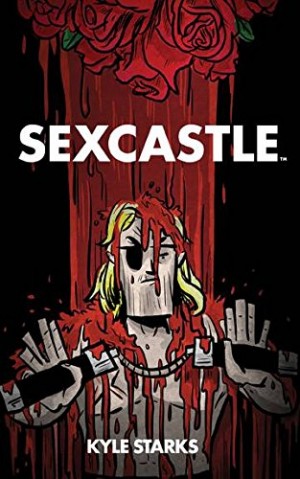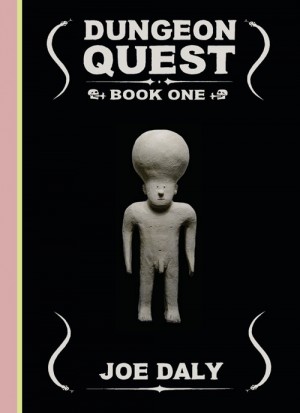Review by Karl Verhoven
Let’s start with deceit perpetrated by Valiant with the cover credits. We’ve loved Fred Van Lente’s run on Archer & Armstrong, so the sight of his name leading off the list of credits implies a significant presence seeing as he wrote every page of the previous six volumes. His new contribution to The One Percent and Other Tales is a single page series recap and a further page extrapolating on the series creation. That’s logical, since Van Lente finished his story in American Wasteland, but how many other creators responsible for just two new pages lead off the cover credit list? He’s also responsible for the longest tale here, but that’s already been seen.
This isn’t to imply the content by others is poor. It’s good for the most part, if not entirely matching the tone of the series to date. Karl Bollers, for instance, manages a good vengeance-driven crime thriller starring Mary Maria, but his plot has none of the comedy moments associated with the series. John Layman’s got that aspect down okay, but his story is slight, not as slight, however as Ray Fawkes on the opening instalment of the title chapter, dealing with one of the many organisations comprising the Sect. It’s reprised in longer fashion later focusing on the One Percent, the ultra-wealthy elite and their continual pursuit of greater power. They were dealt a severe blow by Archer and Armstrong, but Austin Oldenburg-Lancaster is planning to rebuild from the ground up. The emotional heart of the story is lost as Oldenburg-Lancaster is so relentlessly and tiresomely smug and odious: “I’ve sent a message to Cardinal Johnson. I’m going to dress him up as a sexy xmas elf and have him go live on TV”. He’s an over the top caricature you feel soiled for reading about, and the manner in which he’s prepared for every variable in an evolving situation lacks credibility.
Armstrong’s prodigious drinking and consequent bar philosophy features several times, best exemplified by Justin Jordan’s series of single panel snippets from sessions with assorted historical celebrities, which is clever. It’s also notable in presenting the only art in the entire series departing from a form of realism, Rafer Roberts (sample page) drawing in a broad cartoon form. It’s such a contrast that for the single strip it works fine. Elsewhere Joe Eisma, Khari Evans, Andy Kuhn, and Ramon Villalobos all work with the naturalistic comedy look, with Eisma not as keen to populate his backgrounds.
The story selection ends with an uncoloured version of Van Lente and Clayton Henry’s adaptation of Gilgamesh applying to Armstrong and his brothers. It’s clever, and followed by each of the creative staff involved, or their cartoon avatars, writing about their contribution laid over a now coloured page of art. It’s an interesting idea, but here comes over as padding, and would have been better presented in Far Faraway, where the strip originally appeared in book form.
Despite a few nice moments, none of this collection is essential for anyone who enjoyed the previous books, and it doesn’t approach the quality. Unless you have to have every appearance, your money would be better spent on something else. Perhaps the relaunch of Archer & Armstrong as A & A. This is also available along with the previous three books as volume two of Archer & Armstrong: Deluxe Edition.
